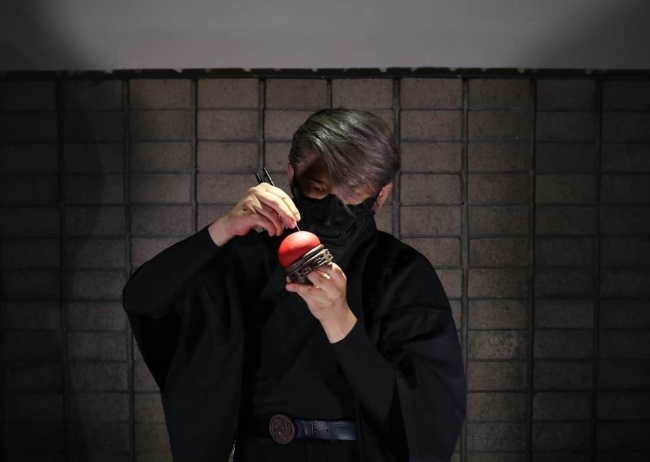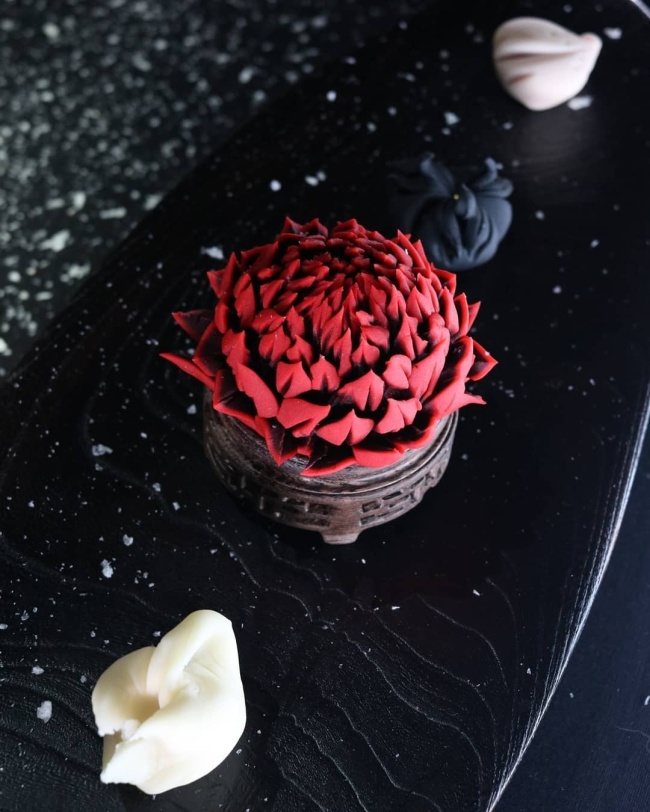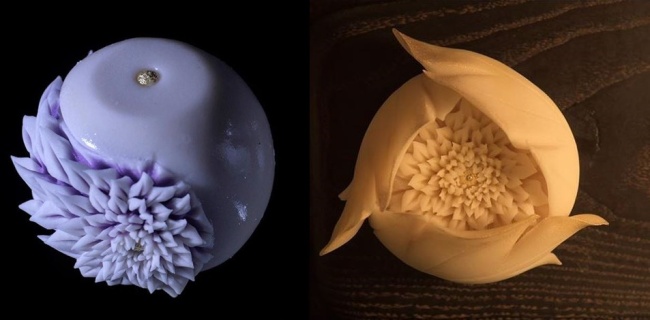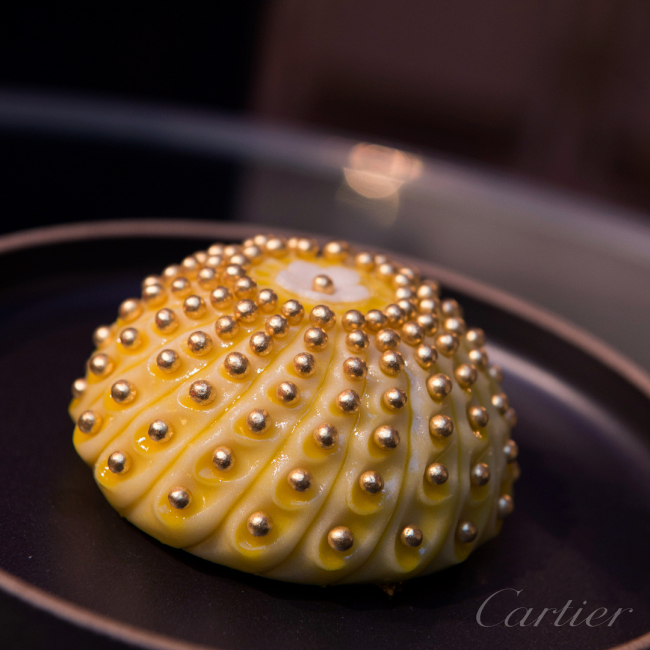[Herald Interview] Sweet treats blossom in hands of wagashi master
Artisan Junichi Mitsubori adds performance to traditional Japanese confection
By Im Eun-byelPublished : Aug. 5, 2018 - 16:22
In a dimly lit room, a masked man in kimono focuses on his hands. Adding refinement to his artwork using bespoke utensils, he eventually blooms a beautiful, pastel-hued flower, yet an edible one -- wagashi.
Junichi Mitsubori is a third-generation artisan of wagashi, traditional Japanese sweets made with bean paste, sugar and glutinous rice. Running a century-old shop handed down from his grandfather to father and then to him, he may seem like an average artisan who has inherited a family business.
Junichi Mitsubori is a third-generation artisan of wagashi, traditional Japanese sweets made with bean paste, sugar and glutinous rice. Running a century-old shop handed down from his grandfather to father and then to him, he may seem like an average artisan who has inherited a family business.


But Mitsubori has succeeded in setting himself apart from others by adding an element of performance. Putting on a costume, he “performs” wagashi making in front of an audience as if he is on a theater stage. He sometimes thinks of himself as a bartender, preparing a drink for a customer.
“I thought about ways to establish myself,” Mitsubori told The Korea Herald at a cafe in Seoul. He was in the city for a few days, teaching a group of locals here who want to learn directly from the master.
“Japanese do not really like to come forward and attract attention. But having been a guitarist before for 10 years, I am used to being onstage, so I made use of the experience,” the artisan said. “Performing wagashi making, I now feel what I felt playing the guitar on a live stage. But my performance is for a single person, no matter how big or small the audience is.”

The 43-year-old artisan has a distinctive philosophical approach to wagashi making. He compared western-style confections to the sun, and wagashi to the moon.
“Western-style confections are bright in color, shiny and keep one upbeat. But wagashi calms people down, making a serene atmosphere,” he said. He made the comparison more obvious by taking the example of photography.
“My hobby is photography. When taking photos of western-style confections, I use bright lighting without making a shadow. But I take photos of wagashi in a temple-like room with natural light coming in through the window,” he said.
Explaining the charm of wagashi further, Mitsubori used an unexpected word -- “pitifulness.”
“It is so beautiful. But it is destined to be destroyed. It creates a sense of pitifulness. That is where the charm comes from,” he said.
Now, Mitsubori is internationally recognized for his unique approach by those in the culinary and patisserie scene and some luxury fashion houses as well.
For example, Mitsubori performed at an event for Cartier, a French luxury jewelry brand, when it launched its Cactus de Cartier collection last month in Japan. To suit the occasion, he created wagashi pieces using jewels. A day before the interview, he received a call from Louis Vuitton’s Japanese unit, too, asking him to stage a performance.

“I am happy to receive such offers, as I think that the high brands have acknowledged wagashi as a form of arts,” the craftsman said.
Mitsubori, however, cannot be spotted easily in Japan, as he is busy traveling across the world, conducting classes and performing onstage.
“My goal is to be appreciated in foreign countries first. It is a Japanese culture, wanting to be evaluated from the outside. We find it hard to assert our opinions, so we are greatly influenced by what others say,” Mitsubori said.
“If people abroad say they like me, then the Japanese people may take interest in me and wagashi more. Young people will have interest in wagashi-making and dream of being wagashi artisans.”
By Im Eun-byel (silverstar@heraldcorp.com)







![[Graphic News] More Koreans say they plan long-distance trips this year](http://res.heraldm.com/phpwas/restmb_idxmake.php?idx=644&simg=/content/image/2024/04/17/20240417050828_0.gif&u=)
![[KH Explains] Hyundai's full hybrid edge to pay off amid slow transition to pure EVs](http://res.heraldm.com/phpwas/restmb_idxmake.php?idx=644&simg=/content/image/2024/04/18/20240418050645_0.jpg&u=20240419100350)






![[From the Scene] Monks, Buddhists hail return of remains of Buddhas](http://res.heraldm.com/phpwas/restmb_idxmake.php?idx=652&simg=/content/image/2024/04/19/20240419050617_0.jpg&u=20240419175937)

![[KH Explains] Hyundai's full hybrid edge to pay off amid slow transition to pure EVs](http://res.heraldm.com/phpwas/restmb_idxmake.php?idx=652&simg=/content/image/2024/04/18/20240418050645_0.jpg&u=20240419100350)

![[Today’s K-pop] Illit drops debut single remix](http://res.heraldm.com/phpwas/restmb_idxmake.php?idx=642&simg=/content/image/2024/04/19/20240419050612_0.jpg&u=)